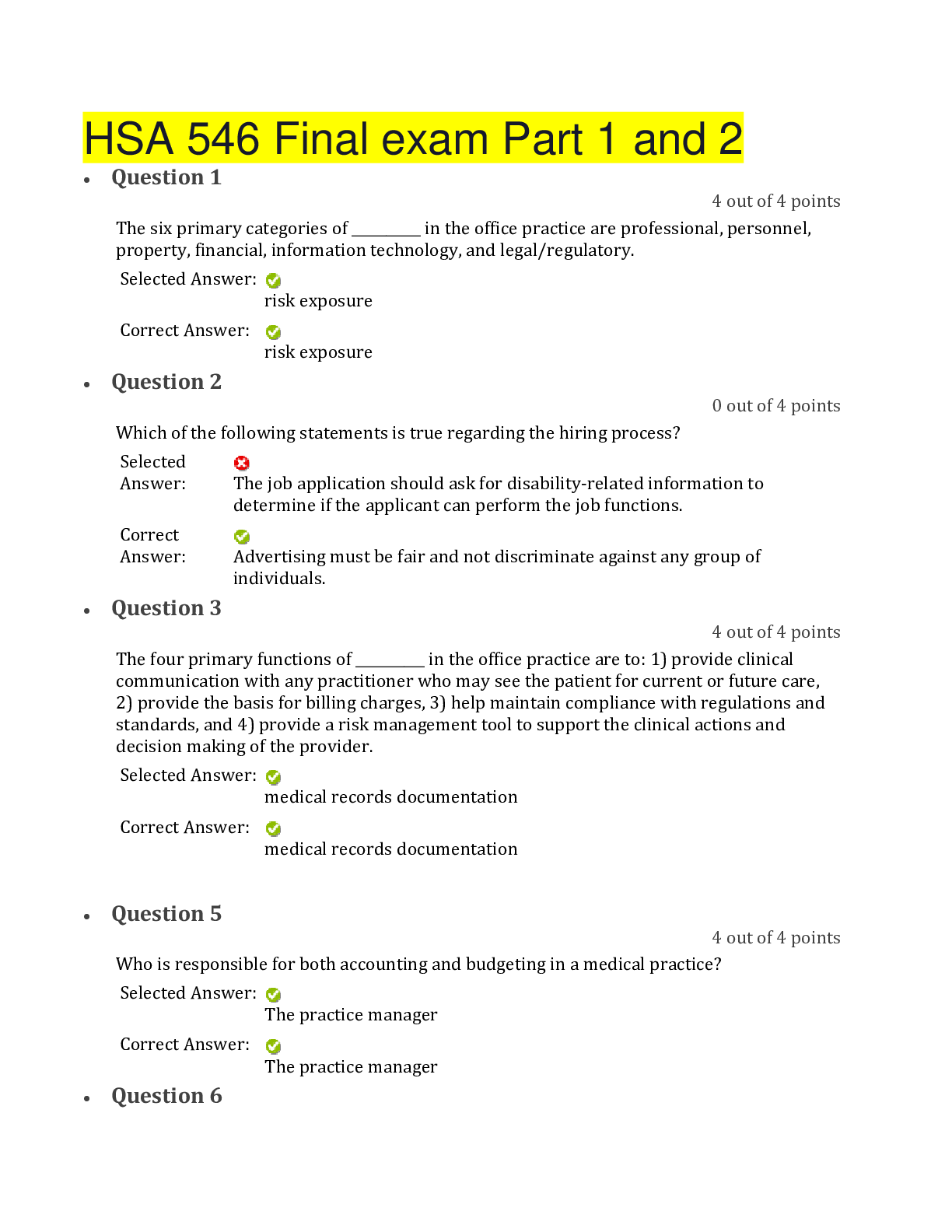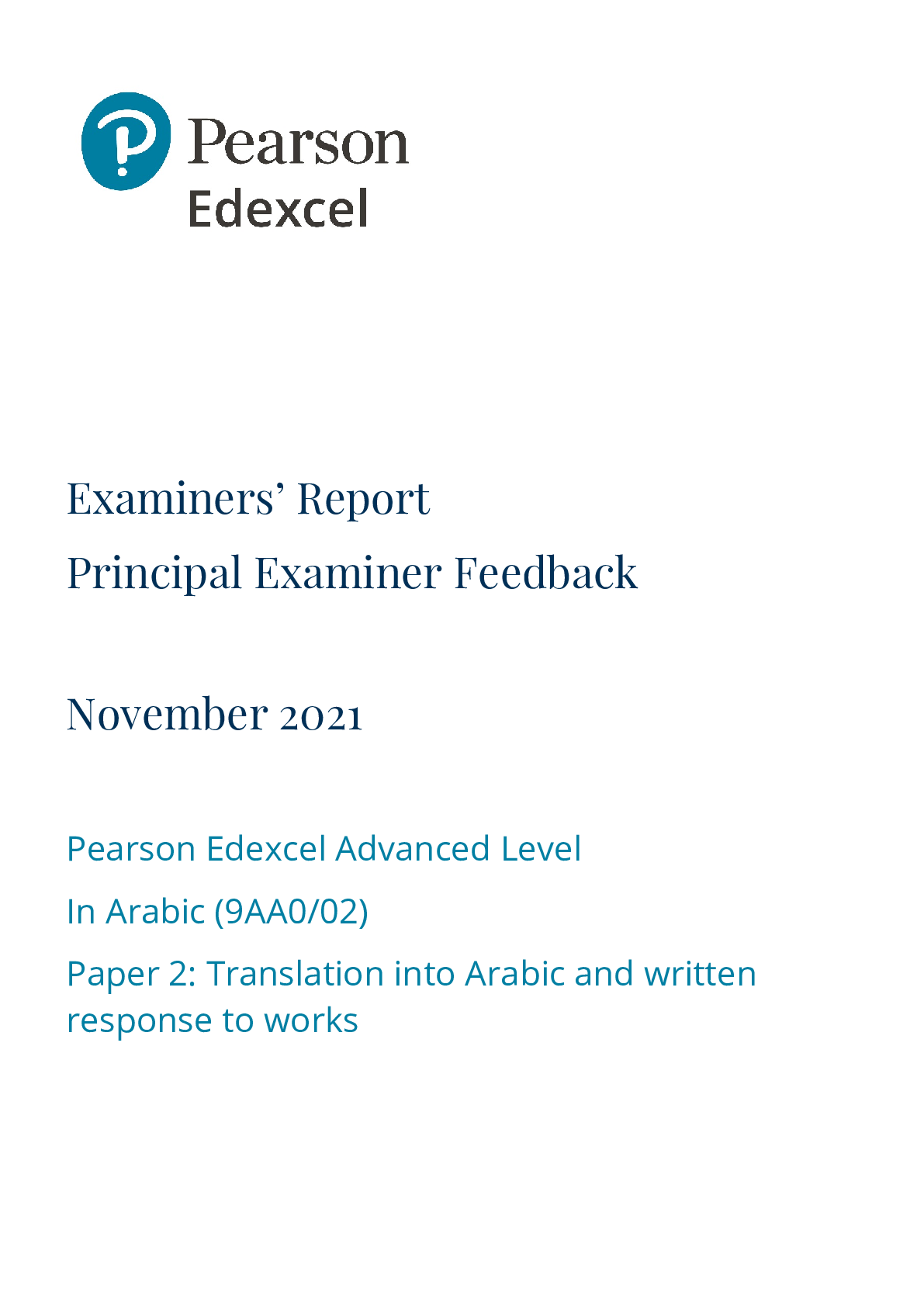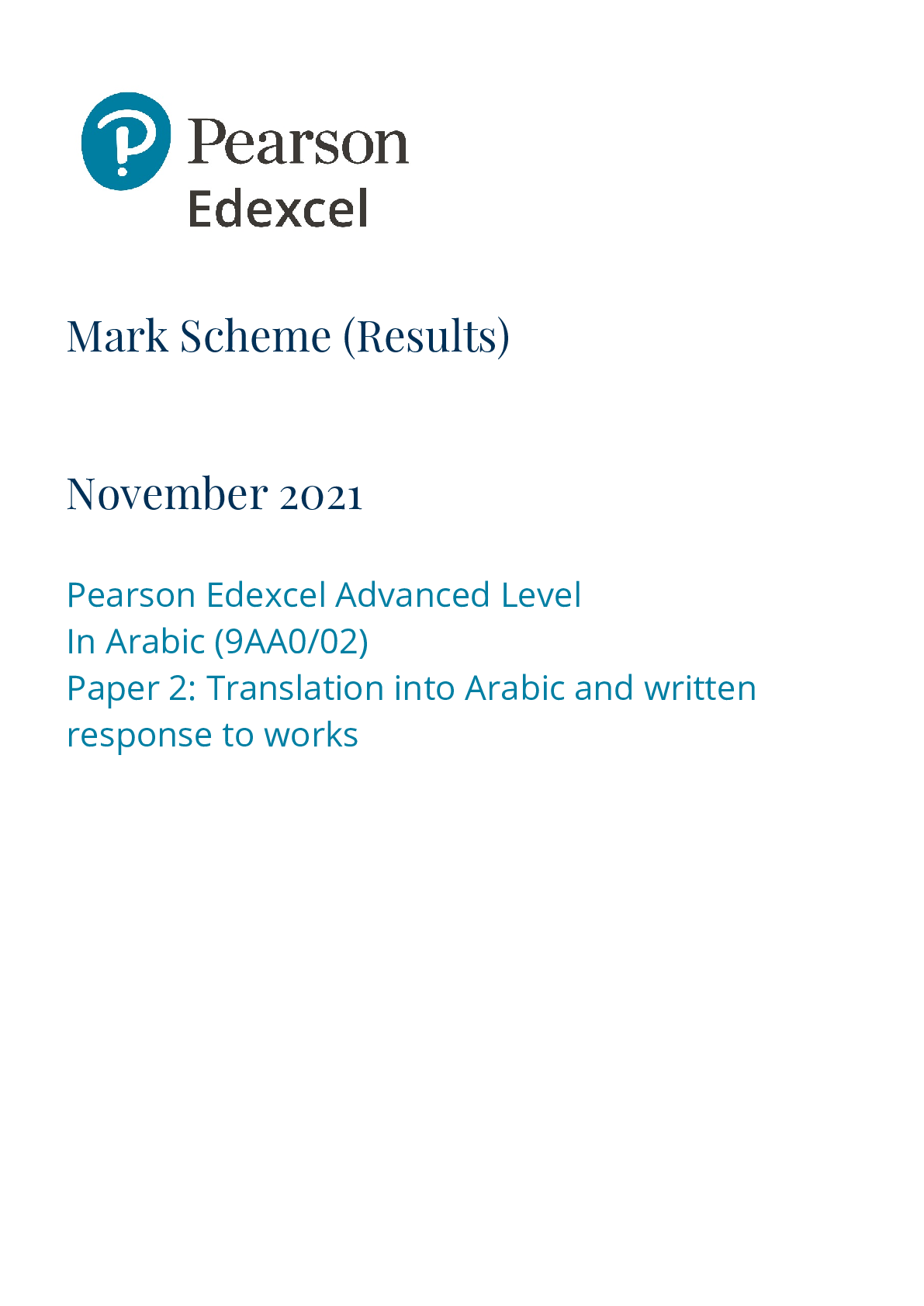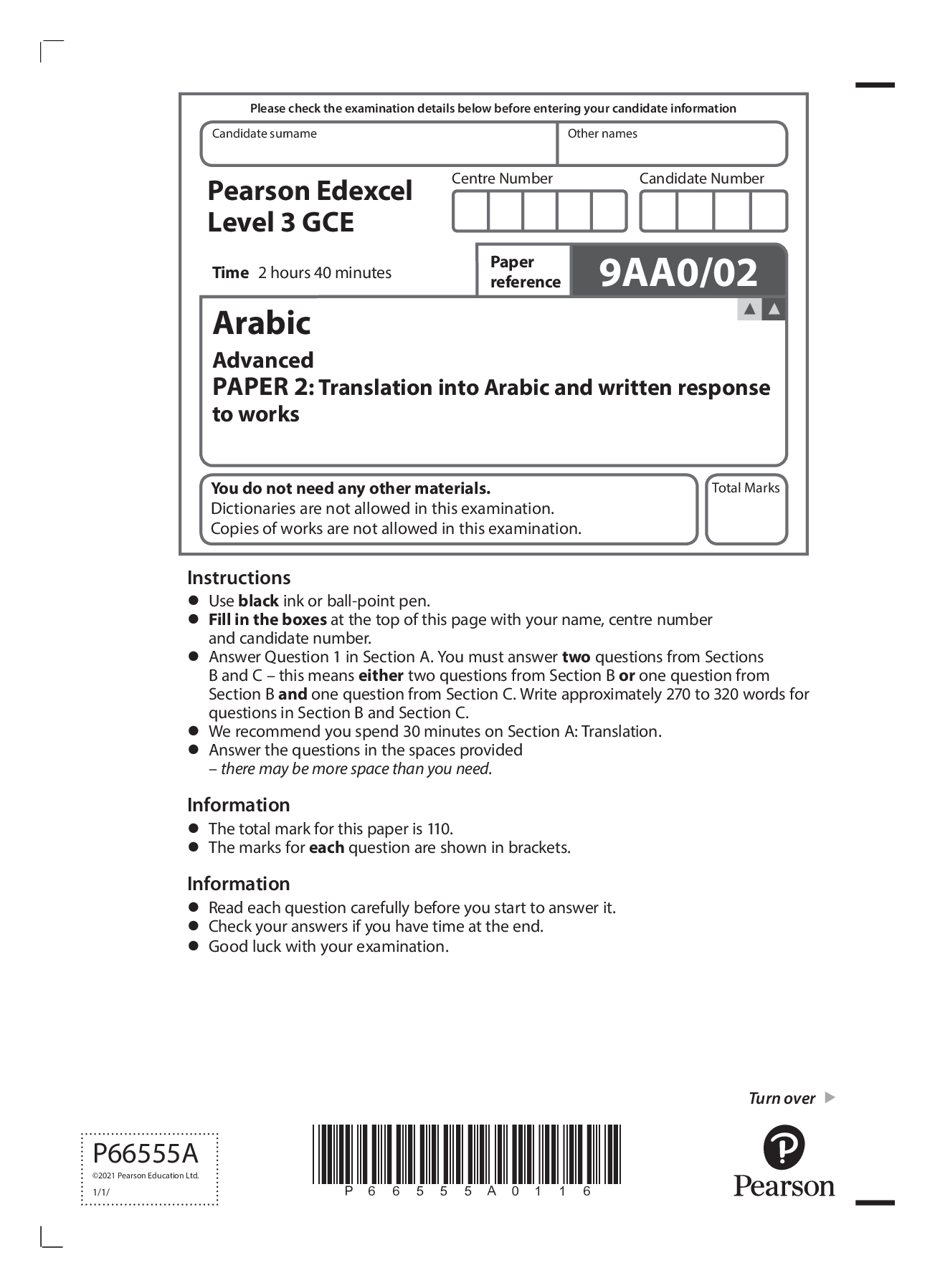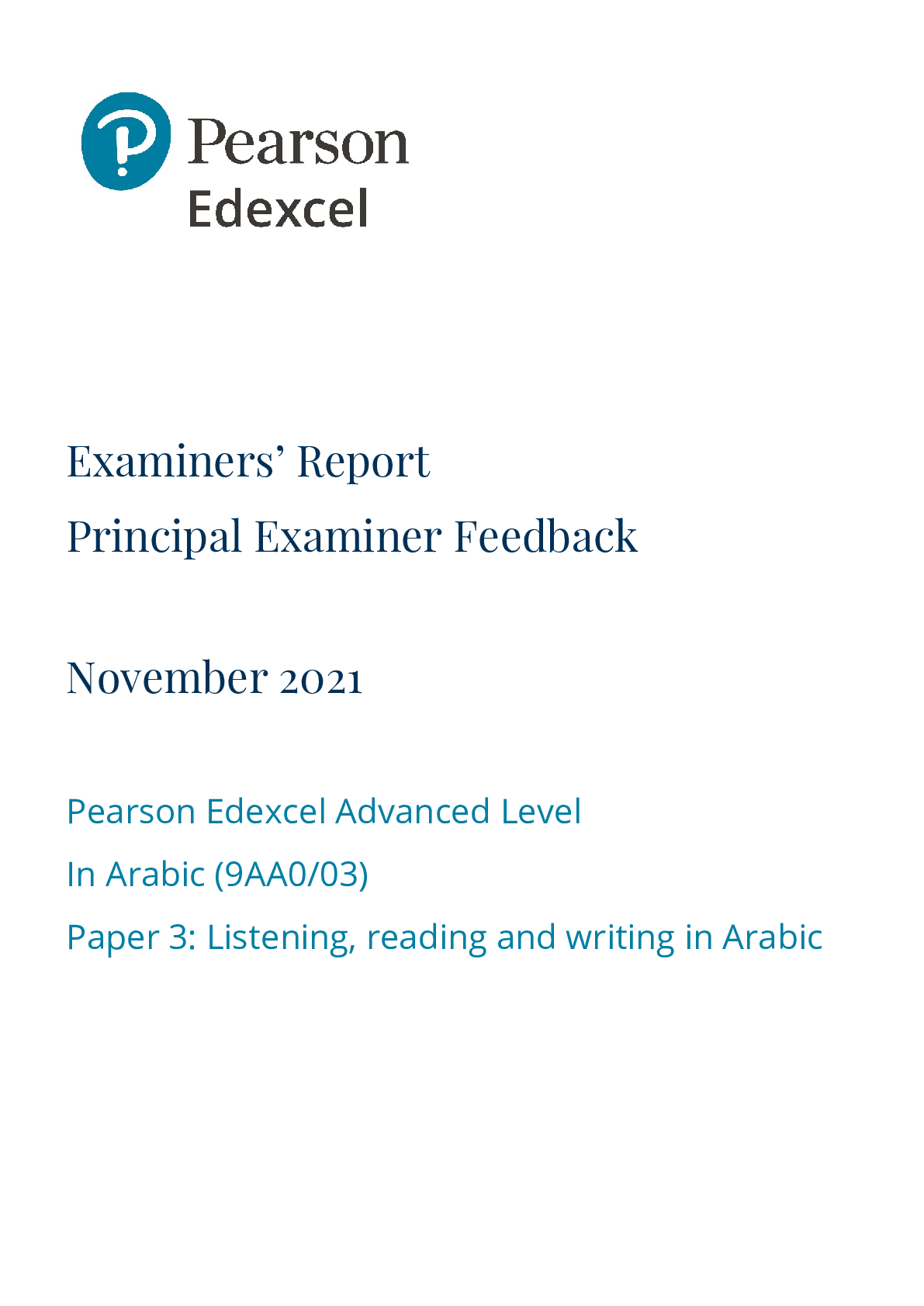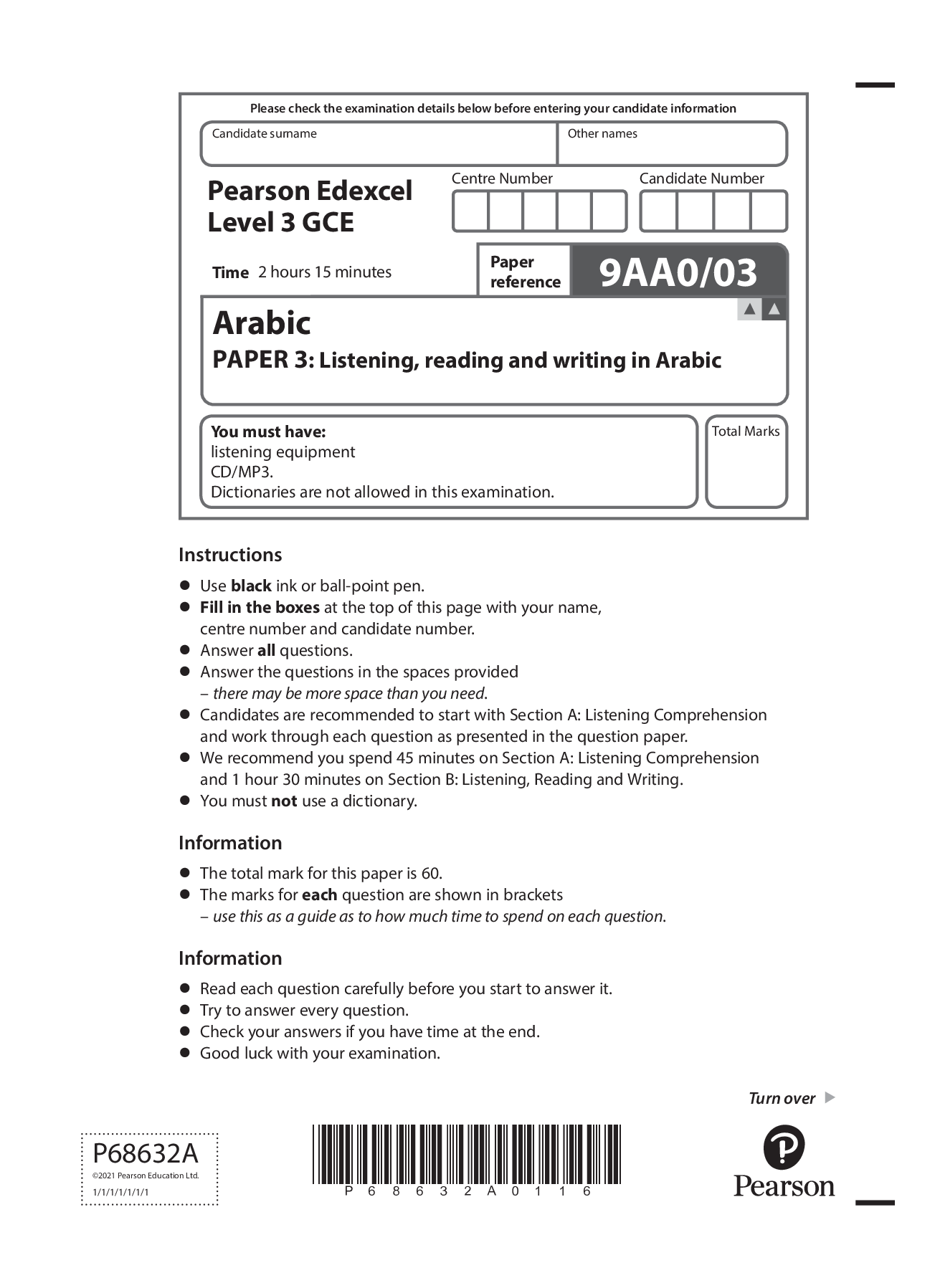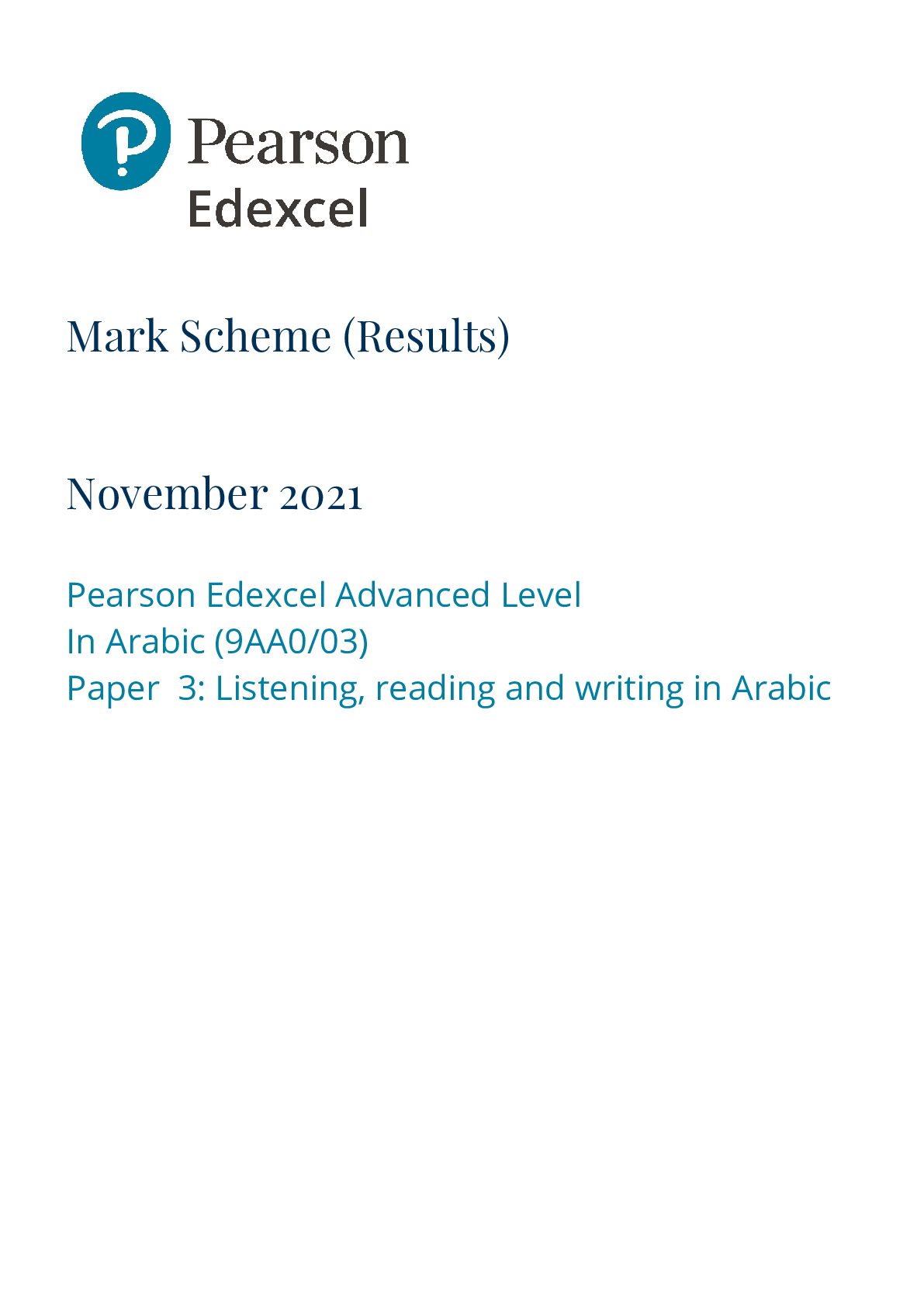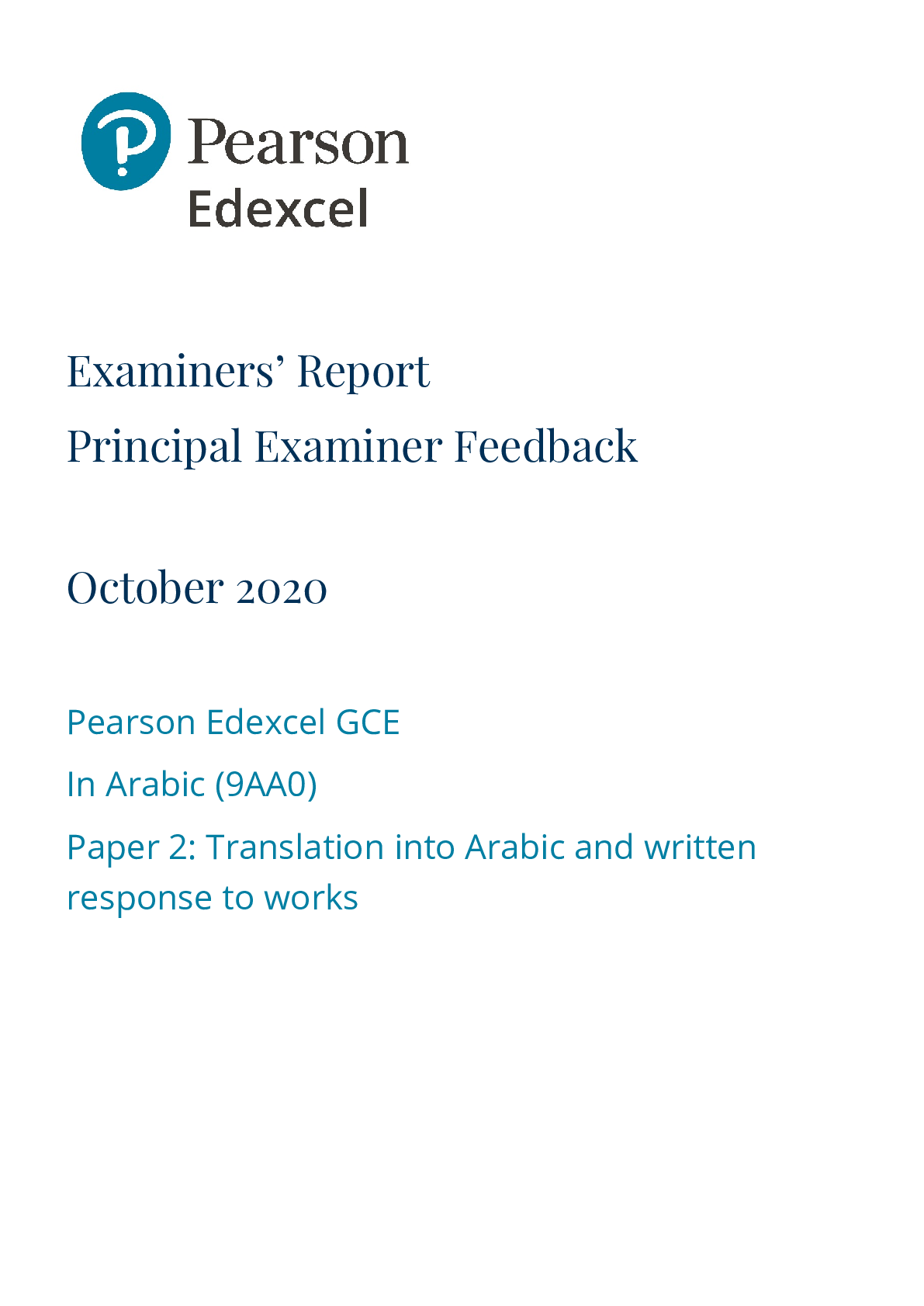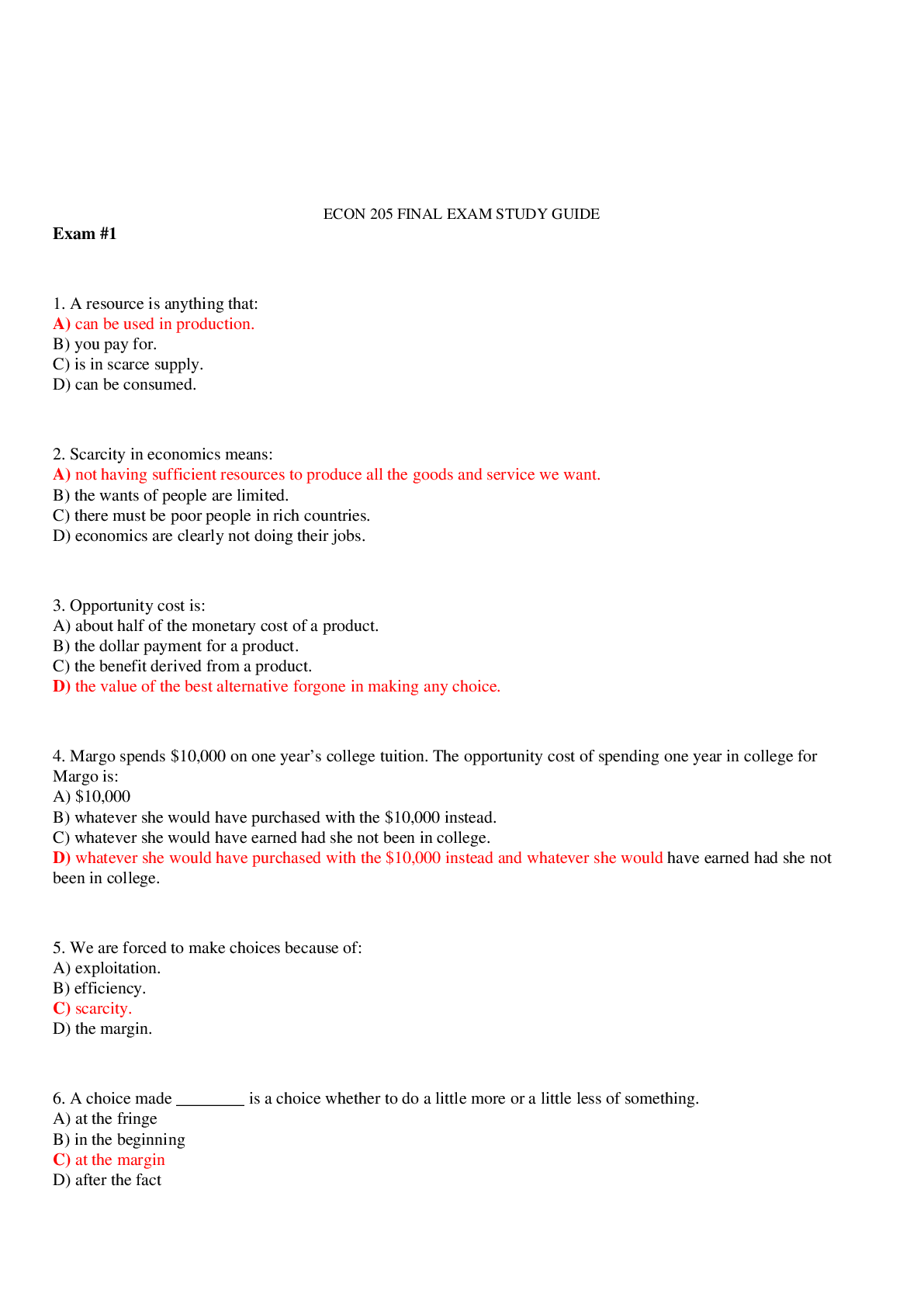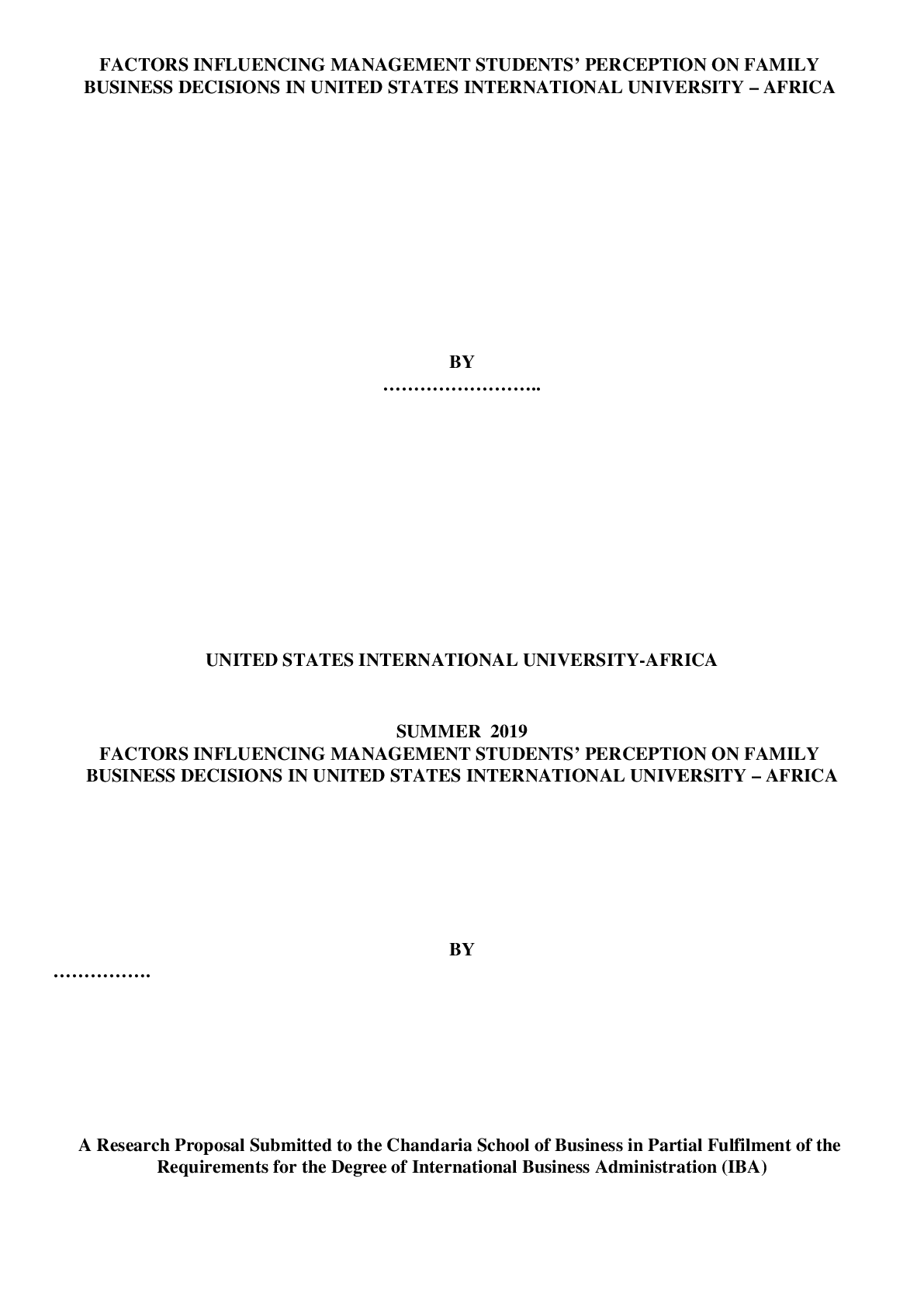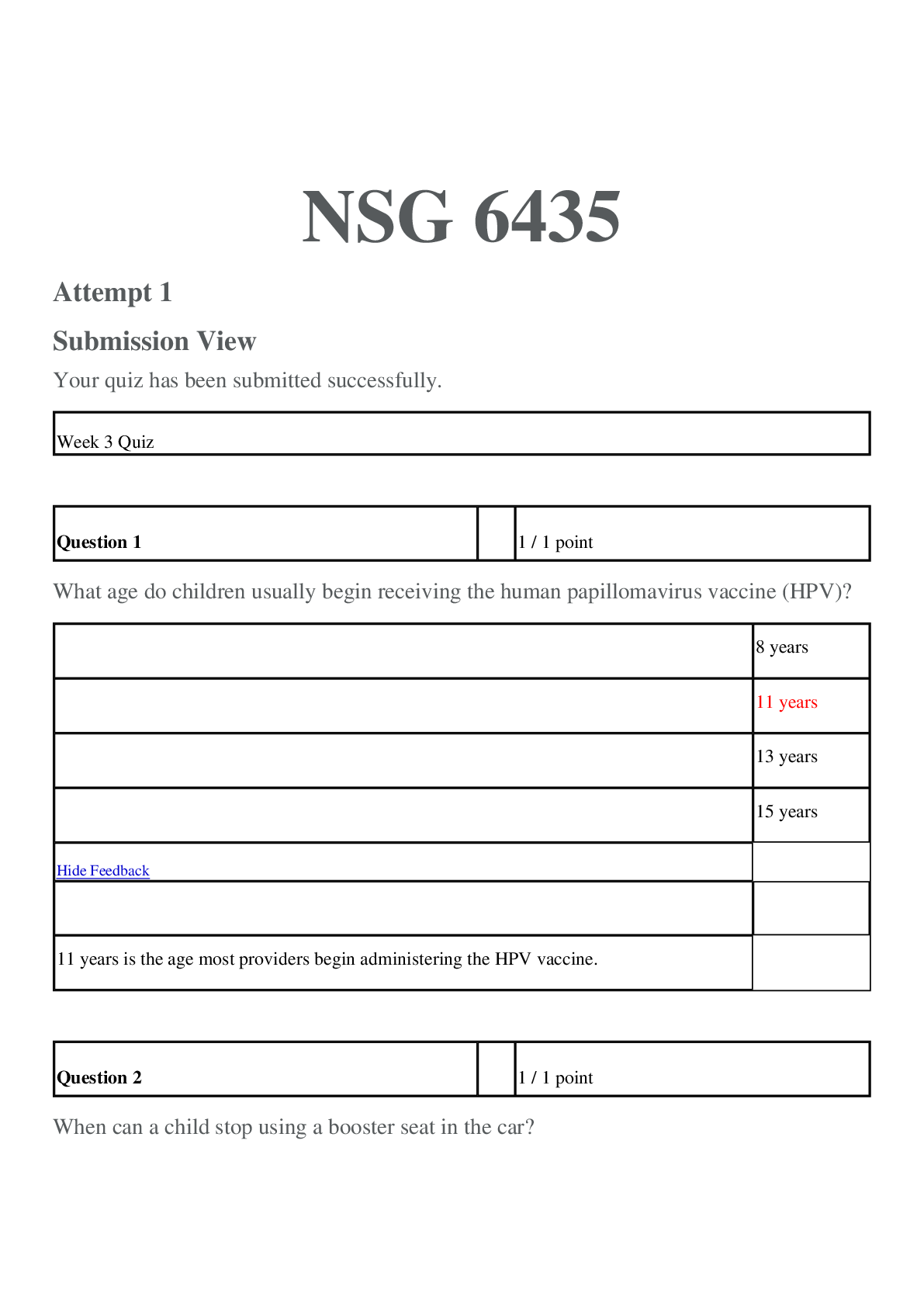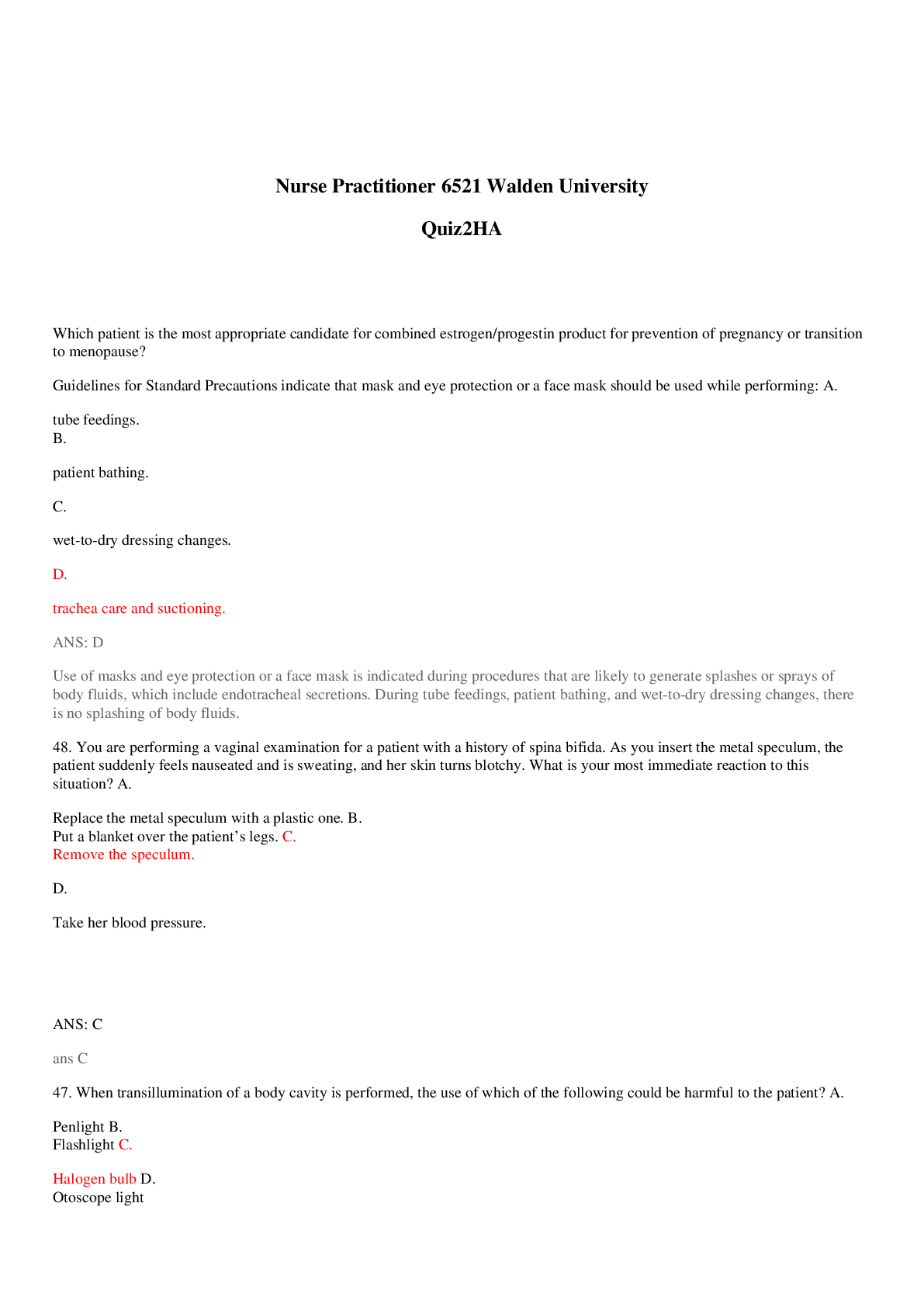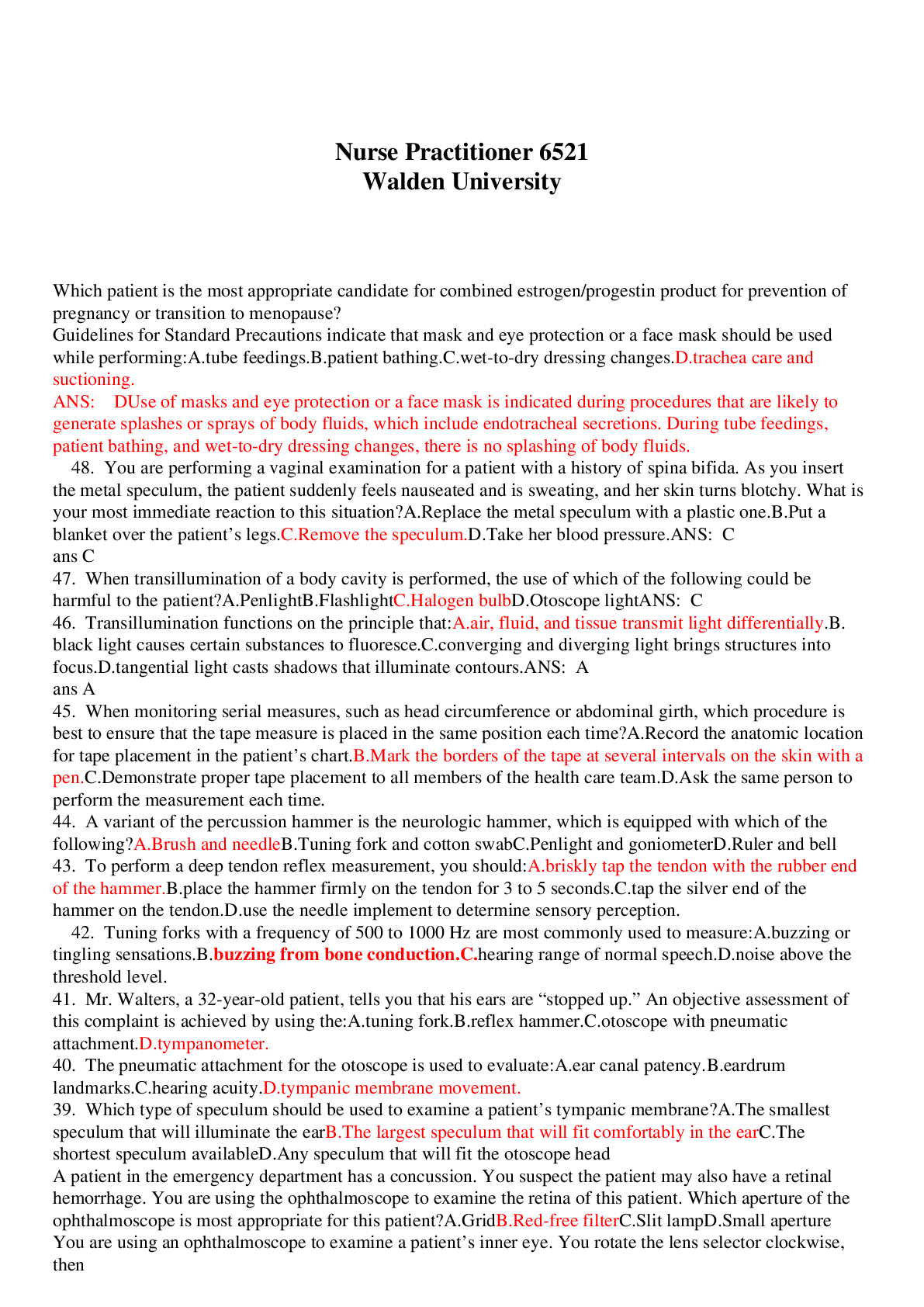HESI RN FUNDAMENTALS
Document Content and Description Below
HESI RN FUNDAMENTALS 1. When turning an immobile bedridden client without assistance, which action by the nurse best ensures client safety? A. Securely grasp the client's arm and leg. B. Pu... t bed rails up on the side of bed opposite from the nurse. C. Correctly position and use a turn sheet. D. Lower the head of the client's bed slowly. Rationale: Because the nurse can only stand on one side of the bed, bed rails should be up on the opposite side to ensure that the client does not fall out of bed. Option A can cause client injury to the skin or joint. Options C and D are useful techniques while turning a client but have less priority in terms of safety than use of the bed rails. 2. The nurse identifies a potential for infection in a client with partial-thickness (second-degree) and full-thickness (third-degree) burns. What intervention has the highest priority in decreasing the client's risk of infection? A. Administration of plasma expanders B. Use of careful handwashing technique C. Application of a topical antibacterial cream D. Limiting visitors to the client with burns Rationale: Careful handwashing technique is the single most effective intervention for the prevention of contamination to all clients. Option A reverses the hypovolemia that initially accompanies burn trauma but is not related to decreasing the proliferation of infective organisms. Options C and D are recommended by various burn centers as possible ways to reduce the chance of infection. Option B is a proven technique to prevent infection. 3. The nurse is aware that malnutrition is a common problem among clients served by a community health clinic for the homeless. Which laboratory value is the most reliable indicator of chronic protein malnutrition? A. Low serum albumin level B. Low serum transferrin level C. High hemoglobin level D. High cholesterol level Rationale: Long-term protein deficiency is required to cause significantly lowered serum albumin levels. Albumin is made by the liver only when adequate amounts of amino acids (from protein breakdown) are available. Albumin has a long half-life, so acute protein loss does not significantly alter serum levels. Option B is a serum protein with a half-life of only 8 to 10 days, so it will drop with an acute protein deficiency. Options C and D are not clinical measures of protein malnutrition. 4. In completing a client's preoperative routine, the nurse finds that the operative permit is not signed. The client begins to ask more questions about the surgical procedure. Which action should the nurse take next? A. Witness the client's signature to the permit. B. Answer the client's questions about the surgery. C. Inform the surgeon that the operative permit is not signed and the client has questions about the surgery. D. Reassure the client that the surgeon will answer any questions before the anesthesia is administered. Rationale: The surgeon should be informed immediately that the permit is not signed. It is the surgeon's responsibility to explain the procedure to the client and obtain the client's signature on the permit. Although the nurse can witness an operative permit, the procedure must first be explained by the health care provider or surgeon, including answering the client's questions. The client's questions should be addressed before the permit is signed. 5. The nurse is assessing several clients prior to surgery. Which factor in a client's history poses the greatest threat for complications to occur during surgery? A. Taking birth control pills for the past 2 years B. Taking anticoagulants for the past year C. Recently completing antibiotic therapy D. Having taken laxatives PRN for the last 6 months Rationale: Anticoagulants increase the risk for bleeding during surgery, which can pose a threat for the development of surgical complications. The health care provider should be informed that the client is taking these drugs. Although clients who take birth control pills may be more susceptible to the development of thrombi, such problems usually occur postoperatively. A client with option C or D is at less of a surgical risk than with option B. 6. When assisting a client from the bed to a chair, which procedure is best for the nurse to follow? A. Place the chair parallel to the bed, with its back toward the head of the bed and assist the client in moving to the chair. B. With the nurse's feet spread apart and knees aligned with the client's knees, stand and pivot the client into the chair. C. Assist the client to a standing position by gently lifting upward, underneath the axillae. D. Stand beside the client, place the client's arms around the nurse's neck, and gently move the client to the chair. Rationale: Option B describes the correct positioning of the nurse and affords the nurse a wide base of support while stabilizing the client's knees when assisting to a standing position. The chair should be placed at a 45-degree angle to the bed, with the back of the chair toward the head of the bed. Clients should never be lifted under the axillae; this could damage nerves and strain the nurse's back. The client should be instructed to use the arms of the chair and should never place his or her arms around the nurse's neck; this places undue stress on the nurse's neck and back and increases the risk for a fall. 7.Which step(s) should the nurse take when administering ear drops to an adult client? (Select all that apply.) A. Place the client in a side-lying position. B. Pull the auricle upward and outward. C. Hold the dropper 6 cm above the ear canal. D. Place a cotton ball into the inner canal. E. Pull the auricle down and back. Rationale: The correct answers (A and B) are the appropriate administration of ear drops. The dropper should be held 1 cm (½ inch) above the ear canal (C). A cotton ball should be placed in the outermost canal (D). The auricle is pulled down and back for a child younger than 3 years of age, but not an adult (E). 8.The nurse is instructing a client in the proper use of a metered-dose inhaler. Which instruction should the nurse provide the client to ensure the optimal benefits from the drug? A. "Fill your lungs with air through your mouth and then compress the inhaler." B. "Compress the inhaler while slowly breathing in through your mouth." C. "Compress the inhaler while inhaling quickly through your nose." D. "Exhale completely after compressing the inhaler and then inhale." Rationale: The medication should be inhaled through the mouth simultaneously with compression of the inhaler. This will facilitate the desired destination of the aerosol medication deep in the lungs for an optimal bronchodilation effect. Options A, C, and D do not allow for deep lung penetration 9. A 20-year-old female client with a noticeable body odor has refused to shower for the last 3 days. She states, "I have been told that it is harmful to bathe during my period." Which action should the nurse take first? A. Accept and document the client's wish to refrain from bathing. B. Offer to give the client a bed bath, avoiding the perineal area. C. Obtain written brochures about menstruation to give to the client. D. Teach the importance of personal hygiene during menstruation with the client. Rationale: Because a shower is most beneficial for the client in terms of hygiene, the client should receive teaching first, respecting any personal beliefs such as cultural or spiritual values. After client teaching, the client may still choose option A or B. Brochures reinforce the teaching. 10. While reviewing the side effects of a newly prescribed medication, a 72-year-old client notes that one of the side effects is a reduction in sexual drive. Which is the best response by the nurse? A. "How will this affect your present sexual activity?" B. "How active is your current sex life?" C. "How has your sex life changed as you have become older?" D. "Tell me about your sexual needs as an older adult." Rationale: Option A offers an open-ended question most relevant to the client's statement. Option B does not offer the client the opportunity to express concerns. Options C and D are even less relevant to the client's statement. 11. The nurse is using the Glasgow Coma Scale to perform a neurologic assessment. A comatose client winces and pulls away from a painful stimulus. Which action should the nurse take next? A. Document that the client responds to painful stimulus. B. Observe the client's response to verbal stimulation. C. Place the client on seizure precautions for 24 hours. D. Report decorticate posturing to the health care provider. Rationale: The client has demonstrated a purposeful response to pain, which should be documented as such. Response to painful stimulus is assessed after response to verbal stimulus, not before. There is no indication for placing the client on seizure precautions. Reporting decorticate posturing to the health care provider is nonpurposeful movement. 12. The nurse plans to administer diazepam, 4 mg IV push, to a client with severe anxiety. How many milliliters should the nurse administer? (Round to the nearest tenth.) A. 0.2 mL B. 0.8 mL C. 1.25 mL D. 2.0 mL Rationale: (1 mL × 4 mg)/5 mg = 0.8 mL 13. The nurse prepares to insert a nasogastric tube in a client with hyperemesis who is awake and alert. Which intervention(s) is(are) correct? (Select all that apply.) A. Place the client in a high Fowler position. B. Help the client assume a left side-lying position. C. Measure the tube from the tip of the nose to the umbilicus. D. Instruct the client to swallow after the tube has passed the pharynx. E. Assist the client in extending the neck back so the tube may enter the larynx. Rationale: (A and D) are the correct steps to follow during nasogastric intubation. Only the unconscious or obtunded client should be placed in a left side-lying position (B). The tube should be measured from the tip of the nose to behind the ear and then from behind the ear to the xiphoid process (C). The neck should only be extended back prior to the tube passing the pharynx and then the client should be instructed to position the neck forward (E). 14. The nurse teaches the use of a gait belt to a male caregiver whose wife has right-sided weakness and needs assistance with ambulation. The caregiver performs a return demonstration of the skill. Which observation indicates that the caregiver has learned how to perform this procedure correctly? A. Standing on his wife's strong side, the caregiver is ready to hold the gait belt if any evidence of weakness is observed. B. Standing on his wife's weak side, the caregiver provides security by holding the gait belt from the back. C. Standing behind his wife, the caregiver provides balance by holding both sides of the gait belt. D. Standing slightly in front and to the right of his wife, the caregiver guides her forward by gently pulling on the gait belt. Rationale: His wife is most likely to lean toward the weak side and needs extra support on that side and from the back to prevent falling. Options A, C, and D provide less security for her. 15. Which nursing diagnosis has the highest priority when planning care for a client with an indwelling urinary catheter?. A. Self-care deficit B. Functional incontinence C. Fluid volume deficit D. High risk for infection Rationale: Indwelling urinary catheters are a major source of infection. Options A and B are both problems that may require an indwelling catheter. Option C is not affected by an indwelling catheter ............CONTINUED [Show More]
Last updated: 1 year ago
Preview 1 out of 30 pages

Buy this document to get the full access instantly
Instant Download Access after purchase
Add to cartInstant download
We Accept:

Reviews( 0 )
$23.50
Document information
Connected school, study & course
About the document
Uploaded On
Jan 27, 2021
Number of pages
30
Written in
Additional information
This document has been written for:
Uploaded
Jan 27, 2021
Downloads
0
Views
50

